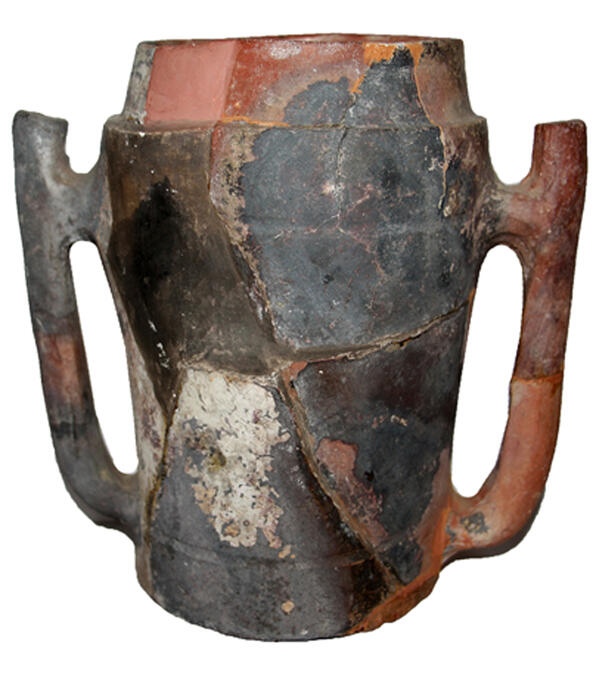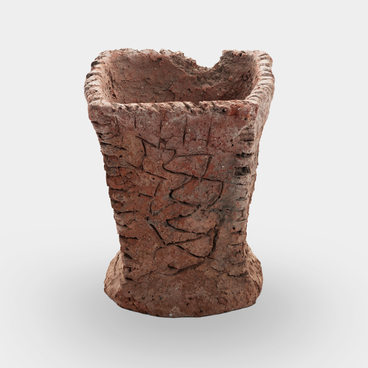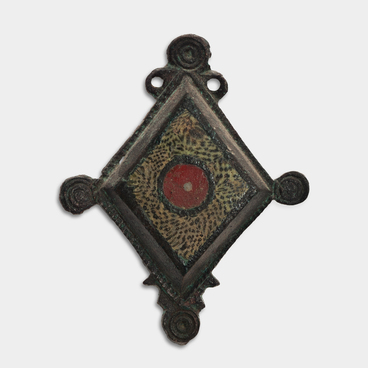The exhibition of the Tanais Archaeological Museum-Reserve features a mug, a typical example of Alan ceramics.
The Alans were Iranian nomadic tribes with Scythian and Sarmatian origins. They were first mentioned in written records in the 1st century CE — the time of their arrival in the Azov Sea region and the Fore-Caucasus. In the 2nd century CE, a small number of Alans moved from the Caucasus to the Lower Don region. They settled in Maeotian cities and Tanais. This migration explains the large number of Alan pottery found in Tanais. The Alan mug was discovered by archaeologists in Tanais in 1976. The mug is an example of tableware and has a capacity of about one liter. Its neck has a high, slightly sloping, straight rim with a ledge that turns into a nearly cylindrical body with a strongly concave base. The body features a symmetrical pair of vertical handles, heart-shaped in cross-section. They go almost from the bottom to the top of the mug and are horizontally cut from above. The ends of the handles are attached to the body through the holes in the sides, using a pin. Where the handles meet the body, the vessel is decorated with shallow, horizontally polished grooves. On the outside, in the center of the bottom, there is a convex symbol in high relief — a cross in a circle. The surface of the vessel is brick-colored and polished.
The Alan ceramics from the Don settlements differ from those produced in the Central Fore-Caucasus. The former do not contain dark-colored minerals and black magnetic glass, which were used by Caucasian potters as a leaner. However, there are also some artificial or natural impurities in Alan pottery made in the Don region that can be mistaken for those from the Caucasus. At the beginning of the 1st millennium CE, there may have been an overland trade route connecting Tanais with the cities of the Central Fore-Caucasus, supported by Sarmatian nomads. As for Alan dining and kitchenware, it seems that such vessels were widely used in everyday life and for funeral rites by the Sarmatians who settled in the city. Use of such ceramics by city residents reveals religious and magical beliefs of Alan tribes that lived in Tanais in the early 3rd century CE.


